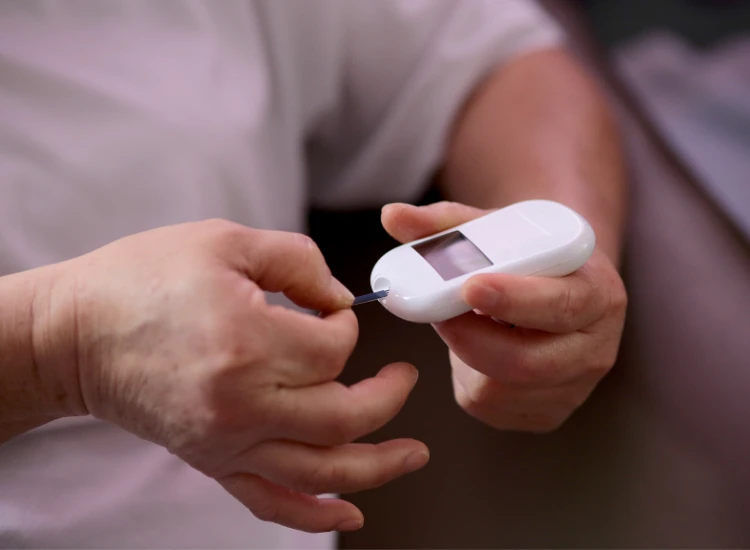Metabolic surgery, also known as diabetes surgery among the people, includes surgeries that enable both diabetes and obesity to be controlled at the same time.

Metabolic surgery, also known as diabetes or sugar surgery among the people, includes surgeries that enable both diabetes and obesity to be controlled at the same time. Diabetes, also known as diabetes mellitus, is divided into Type I and Type II. Type II diabetes, in which insulin is produced in the body, but this insulin is ineffective, is usually associated with obesity. Insulin resistance is seen in Type II diabetes, which is seen in an average of 90% of people with diabetes worldwide. In healthy people, the person feels hunger and eats with a hormone secreted from the stomach. When the stomach wall is stretched with the food he eats, as a result of the stimulus to the brain, the stomach stops secreting hormones and the person begins to feel full. At this time, the food passes into the intestines and begins to be digested and absorbed. In healthy people, undigested foods can easily reach the last parts of the small intestine. Undigested foods cause the glp-1 hormone to be secreted from here. This hormone provides more active insulin release from the pancreas and blood sugar is controlled. However, obese people have a larger stomach and more hunger hormone secretion. These people increase their portions or have to eat more often to feel full. In addition, the size of the intestine and the number of villi that provide food absorption in obese people increase further. Thus, undigested food cannot reach the last part of the small intestine and the glp-1 hormone cannot be activated, as a result, blood sugar begins to rise because the insulin in the pancreas cannot be actively released. With the effect of insulin resistance, the blood sugar rises excessively in patients. As a result, diabetes begins. Medicines, diet and appropriate exercises are generally used in the treatment of type II diabetes. However, in some cases, these treatments are not sufficient and the disease progresses and brings different diseases such as cardiovascular diseases, stroke, kidney and foot disorders and vision loss. In some patients, the desired results cannot be achieved despite intensive use of insulin. In type II diabetes, medications and other treatments are used to control the disease, not to cure it completely. However, today, more precise results can be obtained in the treatment of type 2 diabetes by applying metabolic surgery procedures in suitable patients. Thanks to metabolic surgery, insulin produced in the body but not showing any effect is used. At the same time, with the improvement of other diseases caused by diabetes, the life expectancy of patients is prolonged and their quality of life increases.
Metabolic surgery is not suitable for all types of diabetes. These surgeries have no effect on patients with type I diabetes. In order to benefit from metabolic surgery, the body needs to produce insulin, albeit in a small amount. In this sense, different treatment methods are applied in Type I diabetes where there is no insulin production. Type II diabetes patients, who make up the majority of diabetics, are the most suitable candidates for metabolic surgery. However, even with type 2 diabetes, insulin production in the pancreas may be reduced in patients with diabetes over 10 years of age, so before metabolic surgery, it is necessary to measure the insulin level in the pancreas even if the person has type 2 diabetes. For this, the level of C-peptide substance, which is the precursor of insulin in the pancreas, is checked with a blood test. According to the World Health Organization data, approximately 90% of these patients are also overweight. Body mass index is also of great importance in patient selection. To benefit from metabolic surgery, patients must have a body mass index above 35. Patients who do not respond to medical Type II diabetes treatment and whose mass index is above 30 may also have metabolic surgery.
Today, thanks to developing medicine, metabolic surgery is performed in a closed manner. Operations, which are usually performed by opening 4-6 small incisions, are performed with different methods. The common feature in all surgeries is to intervene in the stomach, reduce appetite and restrict food intake, and additionally make shortcuts that will allow food to reach the last part of the small intestine.
There are some risks seen in every operation after metabolic surgery operations. The risk of bleeding is approximately 0.9%, clot problems 0.3%, stenosis problems 0.3%, the probability of leakage is 1-2%, less frequently anesthesia-related problems that may occur in every surgery, and very rarely (0.2%) percentage of patients losing their lives are among the risks of surgery. However, depending on the type of surgery performed, there are risks such as hernia, diarrhea, vomiting, ulcer, reflux and intestinal obstruction in the long term. However, these risks are seen in a relatively small group of patients. The average success rate of surgeries is 95%.
| Include |
|
|---|